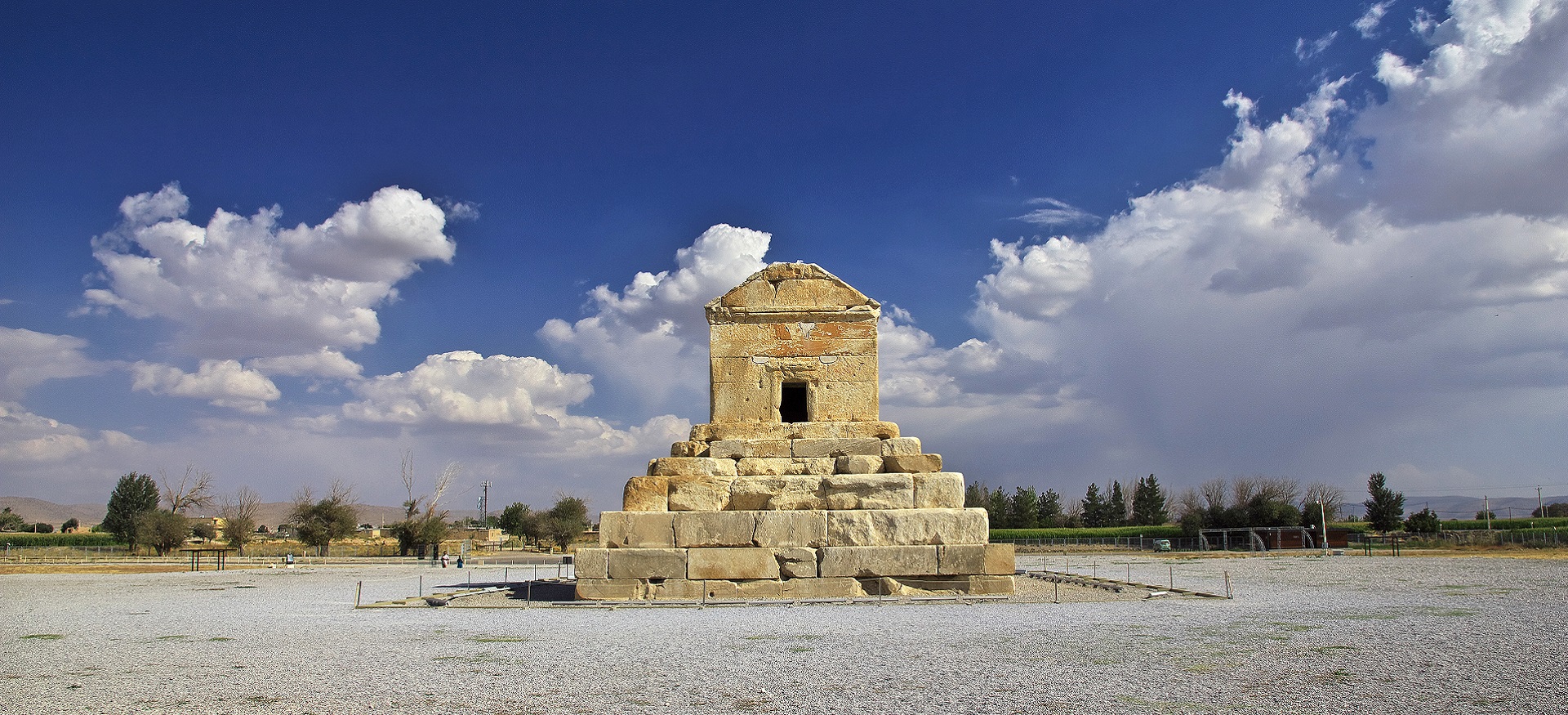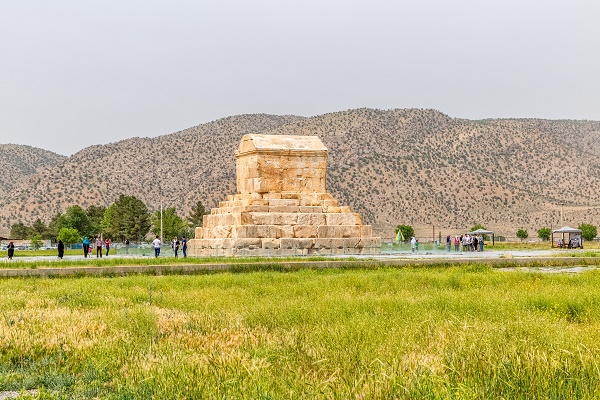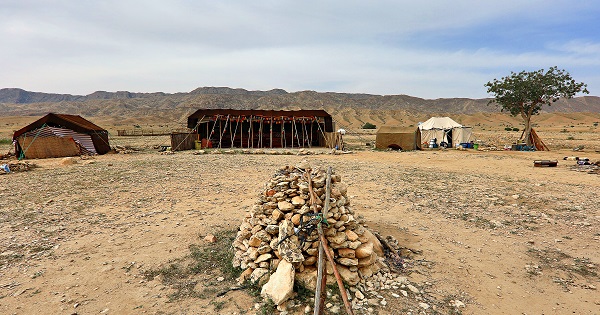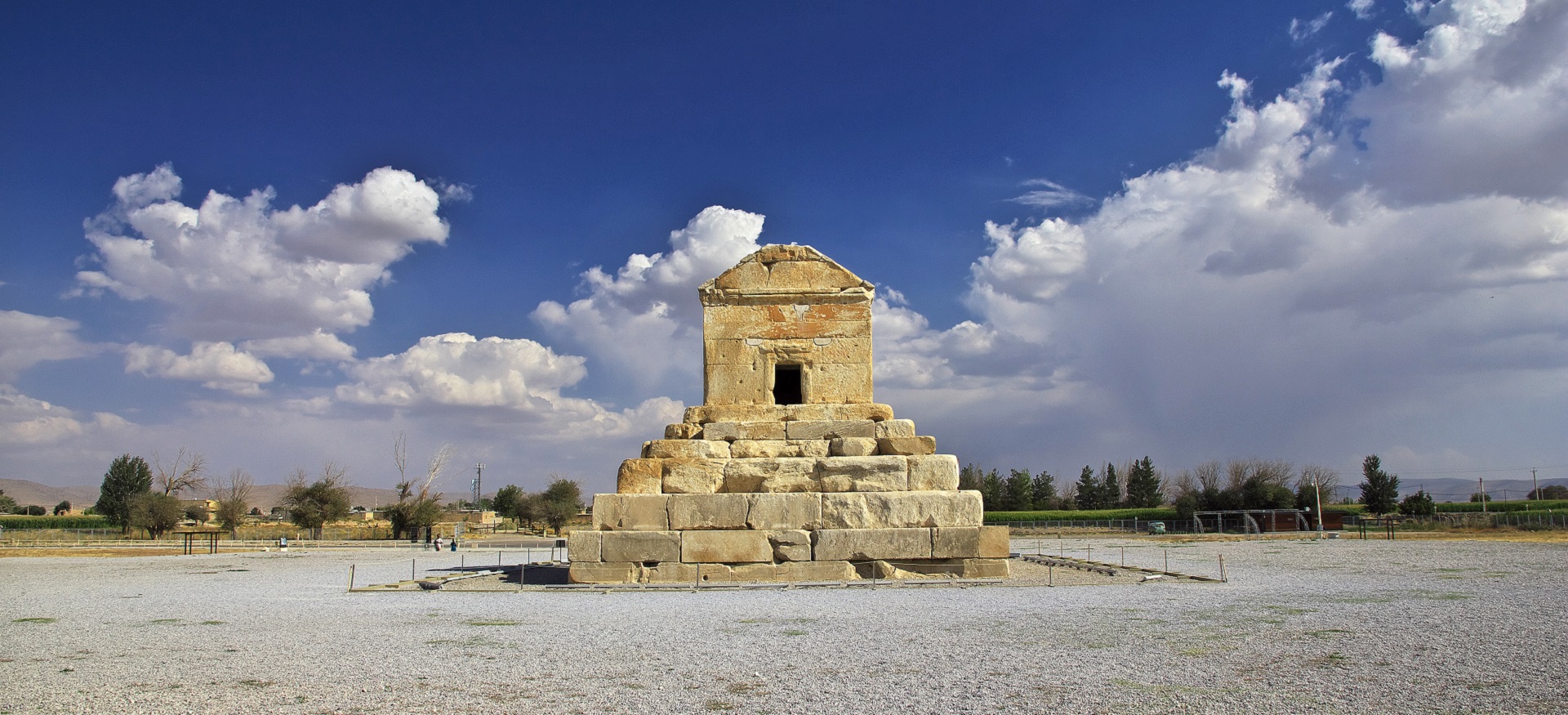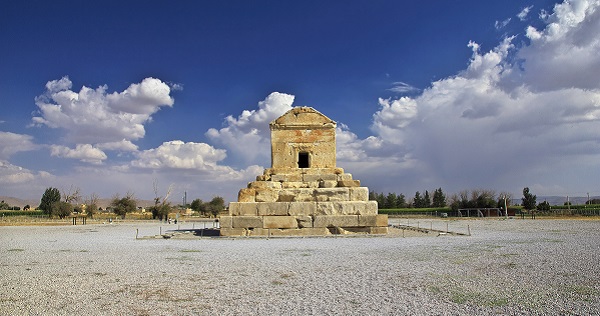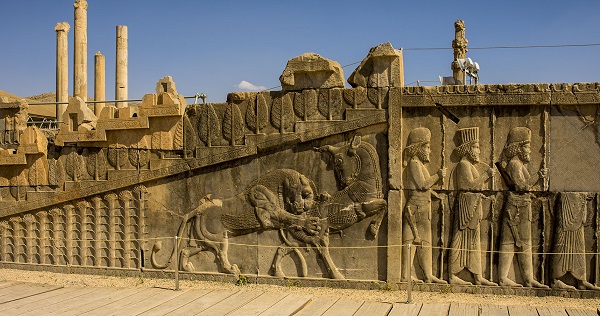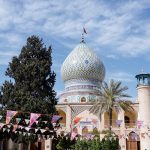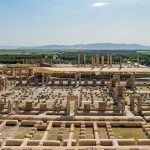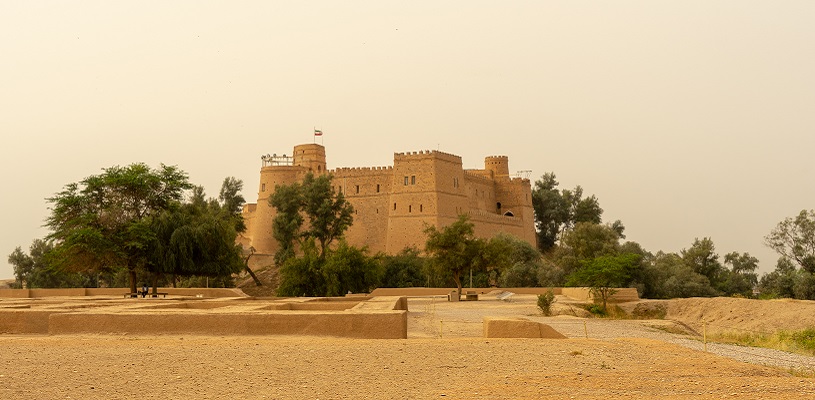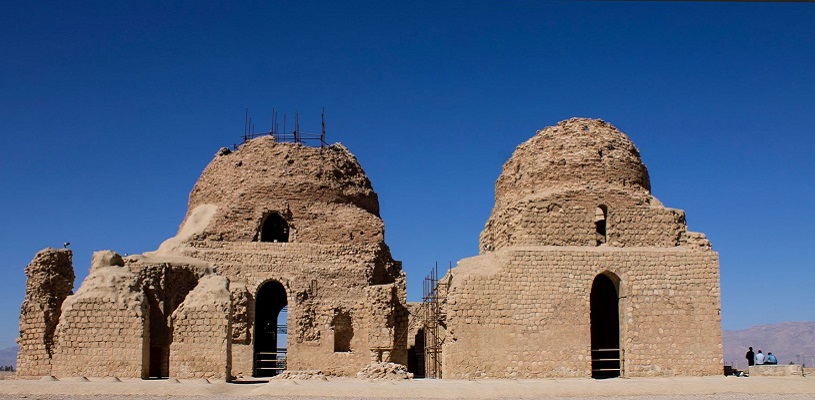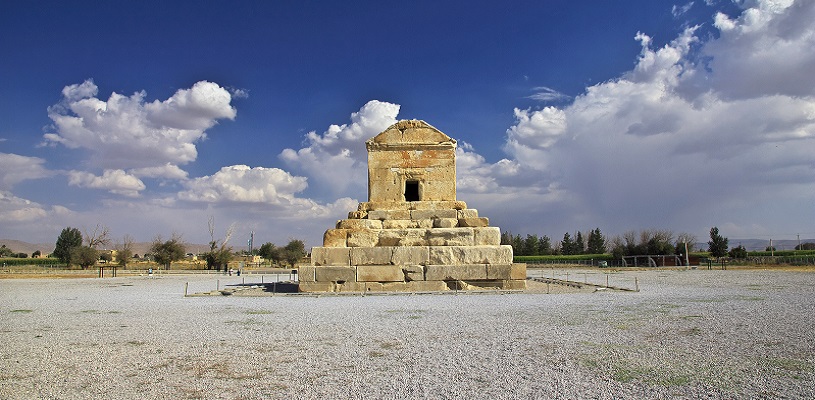
Pasargadae World Heritage Site (Pasargad) | Shiraz, Iran
Like to discover the secrets of the first capital of the greatest empire of the classical world? Then you’ve come to the right place! The royal complex of Pasargadae (UNESCO heritage) is a testimony to the elegance of Persian culture and civilization. Located near Shiraz, the present ruins used to be the royal palaces, halls and gardens that made up the capital of the Achaemenid Empire under Cyrus the Great. The modest monument in which he is eternally resting is presently the highlight of the complex.
Contents
- 1 Why Visit Pasargadae?
- 2 Who were the Achaemenids
- 3 Pasargadae World Heritage Site – The Story of Pasargadae
- 4 Pasargadae World Heritage Site – Architecture of Pasargadae
- 5 The Persian Garden and the Palace Area – Pasargad Shiraz
- 6 Pasargadae World Heritage Site – The Winged Man of Pasargadae
- 7 Pasargadae – Tall-e Takht Fortress
- 8 More About Pasargadae World Heritage Site
- 9 Like to Visit Pasargadae?
- 10 Pasargadae Tours
- 11 Pasargadae World Heritage Site on Map
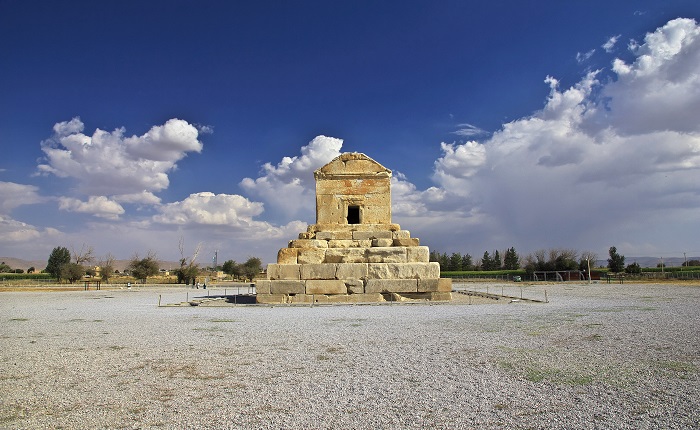
Iran World Heritage Sites – Pasargadae World Heritage Site
Why Visit Pasargadae?
- It is a must-see UNESCO world heritage
- It is the prototype of Persian Gardens
- The tomb of one of the world’s greatest emperors, Cyrus the Great, is there
- It is the first capital of the greatest empire of classical antiquity
- You can see a combination of elements from around the world
Who were the Achaemenids
In 550 BC, Cyrus the Great founded what became the largest empire of classical antiquity: Achaemenid Empire. Since then, the empire kept growing until it covered a land that extended from India to Egypt and the Black Sea, and from the Danube to Central Asia. This made possible the incorporation of the bests of culture, science and art of each nation. Known for their high tolerance of religious diversity, road and postal systems, development of civil services and a large professional army, the Achaemenids influenced the philosophy, religion, language and architecture of the nations under their rule. Now the relics of their artistry, ingenuity and open mind, are of the world’s most precious historical and archeological treasures.
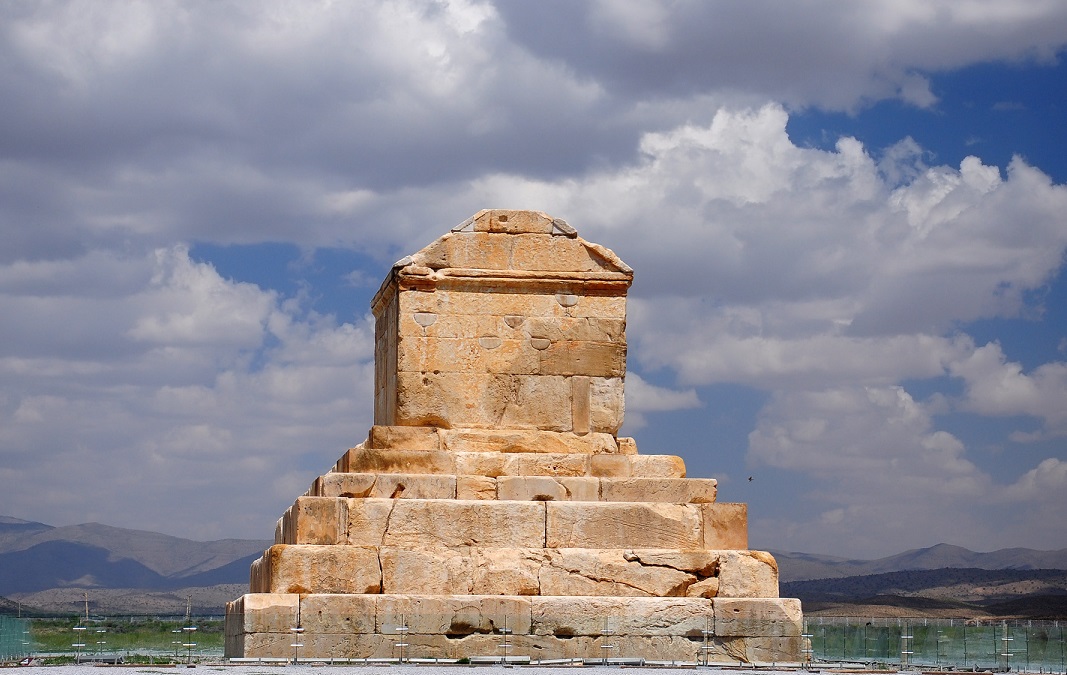
Pasargadae World Heritage Site
Pasargadae World Heritage Site – The Story of Pasargadae
The Achaemenians had many capital cities: Babylon, Pasargadae, Persepolis, Ecbatana (Hamadan), and Susa. According to the Roman historian and geographer Strabo, when Cyrus the Great defeated the last Median king in 550 BC, he ordered the construction of the first capital of Achaemenid Empire near the site of his victory. So, on a large park, he set up the foundations of structures he didn’t live long enough to complete: an entrance hall, an audience hall, a residential palace, and 2 garden pavilions. Archaeologists believe that they probably employed stonemasons from Greek Iona for designing the royal complex. For years, Pasargadae remained the capital of the great empire until Cambyses II moved it to Susa. However, Pasargadae kept its importance probably as the religious capital of the empire where the inauguration ceremonies of the kings were held.
In the 30th year of his rule over Persia, Cyrus I received a fatal wound which killed him. His friends carried his body to Pasargadae and buried him there. Later in 424 BC, Alexander the Great visited and restored the mausoleum. The tomb is the only monument in the sight that’s mentioned in classical accounts of travelers. Though we’ve found no such thing in the mausoleum, an ancient record states that it included a golden bed, a gold coffin, an inscription, precious ornaments and a table set with drinking vessels. The site was first excavated in 1905 and registered in UNESCO as a world heritage in 2004. Finally, in 2006, near Tall-e Takht Fortress which is located at the northeastern end of Pasargadae, archaeologists found the remains of the tomb of Cyrus’s son, Cambyses II.
Pasargadae World Heritage Site – Architecture of Pasargadae
The design of Pasargadae is a model of the first phase of Achaemenid art. Plus, it is a perfect representation of the empire’s synthesis of different cultures. Some of its elements have their precedents in the art and architecture of Mesopotamia, Elam, Babylon, Assyria, Lydia and ancient Egypt. Yet, the hall, the palace, the garden pavilions and the gate also feature architectural traditions of Iranian nomads who lived in large tents.
Today, what has remained of the elegant capital of the Achaemenids is the mausoleum of Cyrus I, Tall-e Takht fortress and what has remained of royal palaces, halls and gardens. The first thing that catches your eyes is the tomb of Cyrus. The isolated position of the tomb has created an appealing view together with the vast plain that surrounds it. The overall design of the limestone tomb conveys a sense of simplicity, integrity and sacredness. Looking like a Greek monument, the structure has made use of refined detail and perfect symmetry in its proportions and lines. The construction technique for Cyrus’s mausoleum and its architectural decoration have western origins. Yet, its overall design and the way elements are put together are what make the tomb original. The chamber has a low and narrow entrance and its only decoration is a rosette on top of the doorway.
The Persian Garden and the Palace Area – Pasargad Shiraz
The royal gardens of Pasargadae are the prototype of the four-sectioned garden design of UNESCO Persian Gardens. With the key role of water both for irrigation and ornamentation, the water channels defined the spaces between the buildings. The palace area was almost a kilometer to the north of the tomb. It had a uniform structure that linked the halls, palaces and gardens together. The stone platforms, staircases, doorways, floors and columns which became the characteristics of Achaemenid architecture had their counterparts in the west. The main architectural element of the era, the stone columns of the halls, was also a western element that first expressed itself in the east in Pasargadae.
Pasargadae World Heritage Site – The Winged Man of Pasargadae
On the remains of the northeastern portal of Pasargadae, you can find the figure of a winged man carved on stone. As one of the best-preserved parts of Pasargadae, the 2500-year old relief is the meeting place of art and philosophy. The figure is like a gallery that creates the beautiful picture of a unity of various cultures. The Syro-Phoenician style, Egyptian crown, Elamite robe, Ionian rosette border and Neo-Babylonian stylistic elements each stand for the respect the great emperor had for the nations under his rule.
The magical creature seems to be praying. He has bushy hair, 4 wings, a crown, and a long cloak. On the crown, you can see long ram horns as symbol of royal power. Pointing to the 4 sides of the world, the 4 wings symbolize Cyrus the Great’s sovereignty over the ancient world. The relief originally came with an inscription only parts of which remain today.
Pasargadae – Tall-e Takht Fortress
On the western slope of a hill in the northeastern end of Pasargadae, there is a stone platform: Tall-e Takht (Throne Hill). The different parts of this citadel date back to different ages, some maybe a bit older than Pasargadae itself. Probably, it was during Cyrus I reign that the construction of Tall-e Takht started. But it was left unfinished after his death. The structure may have been a fortified base to hold palaces and temples. Perhaps during the reign of Darius I, they added a strong mudbrick structure on the platform. Research suggest a fire destructed the building in 280 BC. Plus, the fact that several coin hoards were found in its treasury chamber suggests that the fire was set by the enemy who was unaware of their existence.
More About Pasargadae World Heritage Site
Open Hours
Spring and summer: 7:30 a.m. to 8 p.m.
Fall and winter: 8 a.m. to 6 p.m.
Best Time to Visit
March to May
The Best Season to Visit Pasargadae
Like many sites in the region, the best time to visit Pasargadae is spring. In early spring, the weather is nice, the land is covered with grass and wild flowers, and the smell of spring fills the air.
Pasargadae is NOT Small
If you are not a hiker at heart, visiting all parts of Pasargadae might be a challenge for you. But don’t panic, the shuttle buses found in the complex are there to show you around.
How to Get to Pasargadae
Pasargadae lies on a green plain known as Dasht-e Murghab, 40 km to the northeast of Persepolis and 130 km from Shiraz. To get there from Shiraz, you can take the bus or a taxi from Karandish Bus Terminal. They will take you to Saadatshar Town. From Saadatshahr, there are vehicles that can take you to Pasargadae.
Like to Visit Pasargadae?
Then book a place on our multi-day Cultural Tours or our Persepolis, Naqsh-e Rostam and Pasargadae excursion tour.
Pasargadae World Heritage Site on Map
Keywords: Pasargadae Map, Pasargad Iran, Pasargadae Garden, Pasargadae Persia, Pasargadae Location, Pasargadae Photos, Pasargadae city

